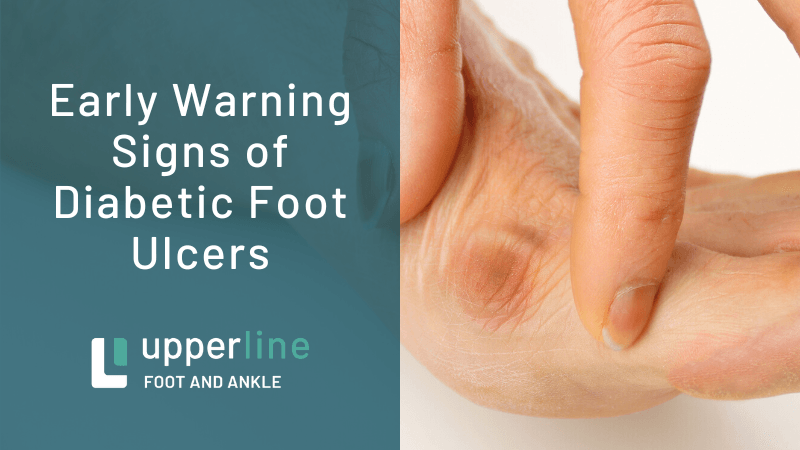Advanced Diagnostics at Foot & Ankle Associates of Florida
At Foot & Ankle Associates of Florida, we are firmly committed to your health and wellbeing. As part of this commitment, our goal is to accurately diagnose the conditions causing you pain and difficulty. By doing so, we create effective treatment plans to resolve problems – and prevent their recurrence.
Problems are so much easier to address when you can see them clearly. Of course, internal injuries and conditions cannot be seen with the naked eye. This is where our diagnostic tools come into play.
The field of podiatry—well, the field of medicine in general—has certainly come a long way with diagnostic tools, including ones that are now available in-office. Some of the key tools podiatrists use to diagnose our patients’ foot and ankle conditions and injuries include X-ray machines, ultrasound, and MRI (magnetic resonance imaging).
In all likelihood, the diagnostic imaging tool you’re most familiar with X-ray technology. X-rays have been used in medicine (and dentistry) to take internal pictures of tissues for several decades now.
Whereas you probably do have a certain degree of familiarity with X-rays, do you know how the technology actually works? Well, these machines emit beams of low-level radiation—which are the “X-rays”—that pass through your body and collect on film or (more often now) digital receivers behind you.
Since tissues allow different levels of radiation to pass through them, “shadows” of sorts are captured on the film or digital receiver. This can clearly show bones and, to a much lesser degree, some soft tissues.
Denser materials, such as bones, appear as white on the resulting image. Softer tissues—muscles, connective tissues, fat, etc.—appear less distinct and are typically gray. Hollow spaces and air show up as black. These various shadings enable medical staff to see alignment issues, breaks, spurs, and other bone-related issues.
During an X-ray session, multiple exposures will typically be taken. Each one creates a single picture from an angle that provides unique perspective. The different angles can highlight certain problems and help us become aware of existing situations.
Now, some people are concerned when they hear about radiation passing through the body – and this is certainly understandable. Of course, we take safety measures like using lead aprons for protection and exposure only happens in small, short bursts.
At this point, X-rays have been used for a long time and are considered to be quite safe. In fact, the odds are pretty decent you’ve had them without experiencing any problems as a result. Given this, you also are probably quite aware this is a painless process!
In most cases, X-rays are mostly limited to bone-related problems, such as diagnosing foot or ankle fractures . Actually, checking for fractures tends to be the most common use. At the same time, we might also use this kind of diagnostic imaging to identify deformities and assess the extent of their seriousness.
Sometimes, X-rays help us to locate bony protrusions and provide a better look at congenital conditions like tarsal coalition and clubfoot.
X-rays are definitely a helpful tool in our practice, but some foot and ankle disorders are related to soft tissues. If you recall, these tissues appear as gray in X-ray images. This means we need a clearer picture in order to properly diagnose the problem and create an effective treatment plan. In such cases, we typically use either ultrasound or MRI diagnostics.
A running theme in this post is the fact that the ability to see inside a patient’s body with diagnostic imagining technology is quite important. Doing so makes a huge difference for our team at Foot & Ankle Associates of Florida as we work to successfully treat the problems you or your loved ones are experiencing. So, let’s explore how ultrasound can be useful for foot injuries.
With ultrasound, focused soundwaves bounce off tissues as they travel across your lower limb. We are able to capture images as the waves at various points. These snapshots are then strung together to create animated (moving, not cartoon!) pictures of your internal tissues as they move. Since soft-tissue injuries do not show up well on X-rays—which are also unable to allow for movement—this is especially valuable.
Some specific soft tissue injuries we may be able to catch and diagnose with ultrasound include torn tendons or ligaments, soft tissue masses (tumors, cysts), Morton’s neuromas , bursitis or capsulitis in joints, and foreign bodies in your feet.
Of the many possible foot problems, plantar fasciitis is definitely one of the most common conditions podiatrists treat. Ultrasound helps immensely to enable us to view and track the progress of plantar fasciitis treatment. We can measure the thickness of inflamed tissue and assess how the treatment is working, and then determine when a patient may benefit from a cortisone injection.
This technology is useful for diagnosing and visualizing connective tissue (ligaments, tendons) injuries and conditions, such as tendinitis and tendon tears. Additionally, disorders in the Achilles tendon, ankle ligaments, and other tendons (including peroneal tendons) are more easily diagnosed and tracked by using ultrasound machines.
In some cases, we may use ultrasound to assist in guiding direct injections of medications (corticosteroids) or as part of our planning for surgical procedures.
Ultrasound is both fast and inexpensive. These qualities make it a helpful tool to have for seeing patients suffering from common foot and ankle disorders.
For your ultrasound, one of our staff members will apply a thin layer of gel to the area being checked. This helps the sound waves transmit easily through your skin. Then the probe that produces the sound waves will be placed directly on your foot. The images will be recorded and used to diagnose your condition.
Since, as we noted, this test is able to observe soft tissues and motion, it can “see” and evaluate problems that other tests, like X-rays, would miss. Our team then examines and uses the images to get you the treatment that you need.
Our podiatrists use ultrasound in real-time mode as tool to ensure injections are guided into specific areas. This is particularly helpful when needing to inject medication into difficult-to-reach joints, plantar fascial insertions, or inflamed soft-tissue areas, like neuromas or bursae. Diagnostic ultrasound clearly has many applications in foot and ankle medical practices, which makes it a great tool for a podiatric practice to have.
The ability to accurately diagnose a painful condition with advanced technology is important. It helps experts like our team at Foot & Ankle Associates of Florida form a targeted treatment plan. Don’t ignore foot pain because you’re afraid of what it might be – let us resolve it for you!
Schedule an Appointment
Upperline Health has locations across Florida ready to care for your lower extremity needs.

Upperline Health Florida provides the highest quality integrated lower extremity care to patients in need through a skilled and compassionate team. We strive to deliver care in a consistent and high-quality manner.
Navigation














